BLOG - Page 32
Recently created mixtures:

Sea-Buckthorn Macerated oil
February 7, 2019

Home made air freshener
June 29, 2016

Homemade Dog-rose distillate
June 28, 2016

Homemade jasmine distillate
June 22, 2016

Moxibustion treatment with Moxa stick
May 30, 2016

Face and body gentle oil cleanser
May 26, 2016
BLOG / LATEST ADDITIONS!
Canola Oil (Brassica Napus) ☸ Base oils ☸ Base / General
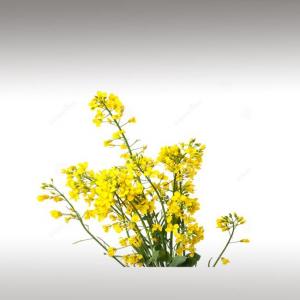

Rapeseed (Brassica Napus), also known as Rape, Oil seed Rape, Rapa, Rappi, Rapaseed (and, in the case of one particular group of cultivars, Canola), is a bright-yellow flowering member of the family Brassicaceae (Mustard or Cabbage family).
The name "Canola" was chosen by the board of the Rapeseed Association of Canada in the 1970s. The "Can" part stands for Canada and "Ola" refers to oil.
Canola was developed through conventional plant breeding from Rapeseed, an Oilseed plant already used in ancient civilization as a fuel. The word "Rape" in Rapeseed comes from the Latin word "Rapum" meaning turnip. Brassica Oilseed varieties are some of the oldest plants cultivated by humanity, with documentation of its use in India 4,000 years ago, and use in China and Japan 2,000 years ago. Its use in Northern Europe for oil lamps is documented to the 13th century.
Rapeseed oil is one of the oldest vegetable oils, but historically was used in limited quantities due to high levels of erucic acid, which is damaging to cardiac muscle of animals, and glucosinolates, which made it less nutritious in animal feed.
Brassica Napus or Rapeseed plant is a cool season small annual flowering herb with deep taproots. It grows to about 4 - 6 feet in height and bears beautiful flowers, which eventually develop into seedpods measuring about 5cm in length. Each seedpod contains 20 to 35 tiny, round Mustard like seeds. The seeds contain about 40% of oil.
Canola is labeled for modified plant developed by Canadian scientists using traditional plant breeding methods to get rid of rapeseed’s undesirable qualities - erucic acid and glucosinolates. Both rapeseed and Canola plants are, therefore, belongs to the same genus of the crucifer familycalled Brassica, the large family of plants, which also includes Turnip, Mustard, Brussels sprouts, Cabbage, Kale, Cauliflower, Broccoli.
Canola oil is light yellow and has a neutral taste. In general, Canola seeds are pressed either by traditional cold-pressing method or in large scale, by hexane extraction method. Cold-pressed oil has its color, taste, and odor that are much more pronounced than those of refined oils are.
The major importers of canola seed are Japan, Mexico, China, and the European Union, while the US is the primary importer of Canola oil and meal. Canada accounts for more than half of world trade in Canola seed, meal, and oil.
The name "Canola" was chosen by the board of the Rapeseed Association of Canada in the 1970s. The "Can" part stands for Canada and "Ola" refers to oil.
Canola was developed through conventional plant breeding from Rapeseed, an Oilseed plant already used in ancient civilization as a fuel. The word "Rape" in Rapeseed comes from the Latin word "Rapum" meaning turnip. Brassica Oilseed varieties are some of the oldest plants cultivated by humanity, with documentation of its use in India 4,000 years ago, and use in China and Japan 2,000 years ago. Its use in Northern Europe for oil lamps is documented to the 13th century.
Rapeseed oil is one of the oldest vegetable oils, but historically was used in limited quantities due to high levels of erucic acid, which is damaging to cardiac muscle of animals, and glucosinolates, which made it less nutritious in animal feed.
Brassica Napus or Rapeseed plant is a cool season small annual flowering herb with deep taproots. It grows to about 4 - 6 feet in height and bears beautiful flowers, which eventually develop into seedpods measuring about 5cm in length. Each seedpod contains 20 to 35 tiny, round Mustard like seeds. The seeds contain about 40% of oil.
Canola is labeled for modified plant developed by Canadian scientists using traditional plant breeding methods to get rid of rapeseed’s undesirable qualities - erucic acid and glucosinolates. Both rapeseed and Canola plants are, therefore, belongs to the same genus of the crucifer familycalled Brassica, the large family of plants, which also includes Turnip, Mustard, Brussels sprouts, Cabbage, Kale, Cauliflower, Broccoli.
Canola oil is light yellow and has a neutral taste. In general, Canola seeds are pressed either by traditional cold-pressing method or in large scale, by hexane extraction method. Cold-pressed oil has its color, taste, and odor that are much more pronounced than those of refined oils are.
The major importers of canola seed are Japan, Mexico, China, and the European Union, while the US is the primary importer of Canola oil and meal. Canada accounts for more than half of world trade in Canola seed, meal, and oil.
Submitted by OperaDreamhouse (October 1, 2014)
Peanut Oil (Arachis Hypogaea) ☸ Base oils ☸ Base / General
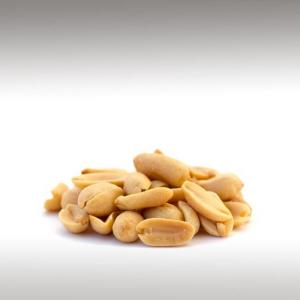

The Peanut or Groundnut or Arachis oil (Arachis Hypogaea) is a species in the legume or "Bean" family (Fabaceae). The Peanut was probably first domesticated and cultivated in the valleys of Paraguay. It is an annual herbaceous plant growing 30 to 50 cm tall.
The specific name, Hypogaea means "Under the Earth"; after pollination, the flower stalk elongates, causing it to bend until the ovary touches the ground. Continued stalk growth then pushes the ovary underground where the mature fruit develops into a legume pod. Pods are 3 to 7 cm long, containing 1 to 4 seeds.
Because, in botanical terms, "nut" specifically refers to indehiscent fruit, the Peanut is not actually a nut, but rather a legume. Peanuts grow best in light, sandy loam soil. They require five months of warm weather.
Peanut oil has a pleasing and sometimes light nutty flavor. In addition to its great taste. Sweet, and flavorful Peanut oil is organic edible oil obtained from pressing Peanut kernels.
Its major componentfatty acids are oleic acid (46,8% as olein), linoleic acid (33,4% as linolein), and palmitic acid (10,0% as palmitin). The oil also contains some stearic acid, arachidic acid, arachidonic acid, behenic acid, lignoceric acid and other fatty acids. Antioxidants such as Vitamin E are sometimes added, to improve the shelf life of the oil.
Shelf life of Peanut oil is about six months in ordinary conditions. When preserved in an airtight container in cool, dry, dark and moisture-free environments its quality may remain good for up to nine months. Its shelf may be extended for more than 12 months with the addition of antioxidants like Vitamin E.
The specific name, Hypogaea means "Under the Earth"; after pollination, the flower stalk elongates, causing it to bend until the ovary touches the ground. Continued stalk growth then pushes the ovary underground where the mature fruit develops into a legume pod. Pods are 3 to 7 cm long, containing 1 to 4 seeds.
Because, in botanical terms, "nut" specifically refers to indehiscent fruit, the Peanut is not actually a nut, but rather a legume. Peanuts grow best in light, sandy loam soil. They require five months of warm weather.
Peanut oil has a pleasing and sometimes light nutty flavor. In addition to its great taste. Sweet, and flavorful Peanut oil is organic edible oil obtained from pressing Peanut kernels.
Its major componentfatty acids are oleic acid (46,8% as olein), linoleic acid (33,4% as linolein), and palmitic acid (10,0% as palmitin). The oil also contains some stearic acid, arachidic acid, arachidonic acid, behenic acid, lignoceric acid and other fatty acids. Antioxidants such as Vitamin E are sometimes added, to improve the shelf life of the oil.
Shelf life of Peanut oil is about six months in ordinary conditions. When preserved in an airtight container in cool, dry, dark and moisture-free environments its quality may remain good for up to nine months. Its shelf may be extended for more than 12 months with the addition of antioxidants like Vitamin E.
Submitted by OperaDreamhouse (September 29, 2014)
Linseed Oil (Linum Usitatissimum) ☸ Base oils ☸ Base / General
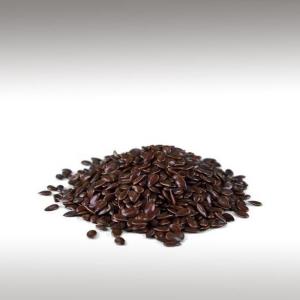

Linseed (Flax), with the binomial name: Linum Usitatissimum, is a member of the genus Linum in the family Linaceae.
It is a food and fiber crop that is grown in cooler regions of the
world. The species is native to the region extending from the eastern Mediterranean, through Western Asia and the Middle East, to India.
The earliest evidence of humans using wild Flax as a textile comes from the present day Republic of Georgia, where spun, dyed, and knotted wild Flax fibers were found in Dzudzuana Cave and dated to the Upper Paleolithic, 30,000 years ago. Flax was first domesticated in the Fertile Crescent region during the Neolithic Revolution and is one of the oldest fiber crops in the world.
Flax was extensively cultivated in ancient Egypt, where temple walls had paintings of flowering Flax and mummies were entombed in Linen. Egyptian priests only wore linen, as Flax was considered a symbol of purity. Phoenicians traded Egyptian linen throughout the Mediterranean, and the Romans loved to use it for their sails.
As the Roman Empire declined, so did Flax production, but Charlemagne revived the crop in the 8th century CE with laws designed to promote the hygiene of Linen textiles and the health of Linseed oil.
Flax, Linum Usitatissimum, is an upright annual plant growing to 1,2 m tall, with slender stems. The leaves are glaucous green, slender lanceolate, 20 - 40 mm long and 3 mm broad.
The flowers are pure pale blue, 15 - 25 mm diameter, with five petals. They can also be bright red. The fruit is a round, dry capsule 5 - 9 mm diameter, containing several glossy brown seeds shaped like an apple pip, 4 - 7 mm long.
Linseed oil, also known as Flaxseed oil is a colourless to yellowish oil obtained from the dried, ripened seeds of the Flax plant.
The oil is obtained by pressing. Flax-based oils are sought after as food because of their high levels of α-Linolenic acid (a particular form of omega - 3 fatty acid), but it is important that only food-grade oil be used for food (unsaturated α-linolenic acid (55,2%),saturated acids palmitic acid (about 7%) and stearic acid (4,6%), monounsaturated oleic acid (22,6%), unsaturated linoleic acid (17%)).
Linseed oil are rich sources of theessential fatty acid alpha-linolenic acid (ALA). In the body, some ALA is converted to omega-3 fatty acids.
Linseed oil is a triglyceride, like other fats. Linseed oil is distinctive for its unusually large amount of α-linolenic acid, which has a distinctive reaction with oxygen in air.
Flaxseed oil is easily oxidized, and rapidly becomes rancid, with an unpleasant odour, unless refrigerated. Even when kept under cool conditions, it has a shelf life of only a few weeks. Oil with an unpleasant or rancid odor should be discarded.
The earliest evidence of humans using wild Flax as a textile comes from the present day Republic of Georgia, where spun, dyed, and knotted wild Flax fibers were found in Dzudzuana Cave and dated to the Upper Paleolithic, 30,000 years ago. Flax was first domesticated in the Fertile Crescent region during the Neolithic Revolution and is one of the oldest fiber crops in the world.
Flax was extensively cultivated in ancient Egypt, where temple walls had paintings of flowering Flax and mummies were entombed in Linen. Egyptian priests only wore linen, as Flax was considered a symbol of purity. Phoenicians traded Egyptian linen throughout the Mediterranean, and the Romans loved to use it for their sails.
As the Roman Empire declined, so did Flax production, but Charlemagne revived the crop in the 8th century CE with laws designed to promote the hygiene of Linen textiles and the health of Linseed oil.
Flax, Linum Usitatissimum, is an upright annual plant growing to 1,2 m tall, with slender stems. The leaves are glaucous green, slender lanceolate, 20 - 40 mm long and 3 mm broad.
The flowers are pure pale blue, 15 - 25 mm diameter, with five petals. They can also be bright red. The fruit is a round, dry capsule 5 - 9 mm diameter, containing several glossy brown seeds shaped like an apple pip, 4 - 7 mm long.
Linseed oil, also known as Flaxseed oil is a colourless to yellowish oil obtained from the dried, ripened seeds of the Flax plant.
The oil is obtained by pressing. Flax-based oils are sought after as food because of their high levels of α-Linolenic acid (a particular form of omega - 3 fatty acid), but it is important that only food-grade oil be used for food (unsaturated α-linolenic acid (55,2%),saturated acids palmitic acid (about 7%) and stearic acid (4,6%), monounsaturated oleic acid (22,6%), unsaturated linoleic acid (17%)).
Linseed oil are rich sources of theessential fatty acid alpha-linolenic acid (ALA). In the body, some ALA is converted to omega-3 fatty acids.
Linseed oil is a triglyceride, like other fats. Linseed oil is distinctive for its unusually large amount of α-linolenic acid, which has a distinctive reaction with oxygen in air.
Flaxseed oil is easily oxidized, and rapidly becomes rancid, with an unpleasant odour, unless refrigerated. Even when kept under cool conditions, it has a shelf life of only a few weeks. Oil with an unpleasant or rancid odor should be discarded.
Submitted by OperaDreamhouse (September 29, 2014)
Sapote Seed Oil (Pouteria Sapota) ☸ Base oils ☸ Base / General
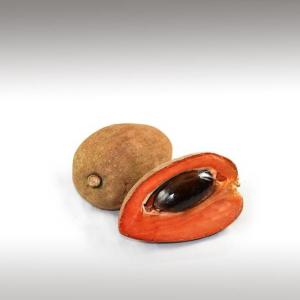

Pouteria Sapota, Mamey Sapote, is a species of tree native to Central America, naturally ranging from southern Mexico to southern Costa Rica. Mamey Sapote is a large and highly ornamental evergreen tree that can reach a height of 15 - 45 meters at maturity.
The fruit is about 10 - 25 cm long and 8 - 12 cm wide and has flesh ranging in color from pink to orange to red. The fruits texture is creamy and soft. A mamey sapote is ripe when the flesh is pink when a fleck of the skin is removed. The flesh should give slightly, as with a ripe Kiwifruit.
Some beauty products use oil pressed from the seed, otherwise known as Sapayul oil. The oil is described as having an "almond-like odor" and a "mild, pleasant taste", and is also used as a cooking oil in some tropical countries. This oil is rich in Vitamins A, B, C and E, proteins, amino acids, fatty acids and minerals.
The fruit is about 10 - 25 cm long and 8 - 12 cm wide and has flesh ranging in color from pink to orange to red. The fruits texture is creamy and soft. A mamey sapote is ripe when the flesh is pink when a fleck of the skin is removed. The flesh should give slightly, as with a ripe Kiwifruit.
Some beauty products use oil pressed from the seed, otherwise known as Sapayul oil. The oil is described as having an "almond-like odor" and a "mild, pleasant taste", and is also used as a cooking oil in some tropical countries. This oil is rich in Vitamins A, B, C and E, proteins, amino acids, fatty acids and minerals.
Submitted by OperaDreamhouse (September 28, 2014)
Murumuru Butter (Astrocaryum Murumuru) ☸ Base oils ☸ Base / General
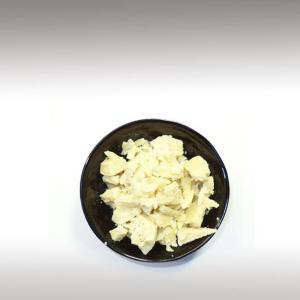

Astrocaryum Murumuru is a palm native to Amazon Rainforest vegetation in Brazil, which bears edible fruits. The Murumuru palm trees grow in Brazil and around the Amazon
and are one of the dominant tree in this region. It has a thick trunk
and a shuttlecock-shaped bushy crown.
The nutritious, edible fruits are an important local food source and materials made from the tree, fruit and seed kernels are commercially significant to the region.
Murumuru Seed Butter is pressed from the reddish-orange fruits of the Astrocaryum Murumuru tree. Murumuru Butter is the white to yellowish fat obtained from the seeds of the Murumuru palm. Murumurubutter contains Vitamins and has a high content of beneficial oleic acid.
In terms of the benefits Murumuru Butter is very similar to Coconut oil but apparently, structurally, it should provide better moisturizing.
The composition of Murumuru Butter is 85% saturated fats, 12% monounsaturated fats and 3% polyunsaturated :
Saturated fats: Caprylic acid (2%), Capric (2%), Lauric acid (46%) , Myristic acid (26%) , Palmitic acid (6%), Stearic acid (3%).
Monounsaturated fats: Oleic acid 12%.
Polyunsaturated fats : Linoleic acid 3%.
Murummuru butter has a melting point of 25˚C to 37˚C and a shelf life of 1 to 2 years.
The nutritious, edible fruits are an important local food source and materials made from the tree, fruit and seed kernels are commercially significant to the region.
Murumuru Seed Butter is pressed from the reddish-orange fruits of the Astrocaryum Murumuru tree. Murumuru Butter is the white to yellowish fat obtained from the seeds of the Murumuru palm. Murumurubutter contains Vitamins and has a high content of beneficial oleic acid.
In terms of the benefits Murumuru Butter is very similar to Coconut oil but apparently, structurally, it should provide better moisturizing.
The composition of Murumuru Butter is 85% saturated fats, 12% monounsaturated fats and 3% polyunsaturated :
Saturated fats: Caprylic acid (2%), Capric (2%), Lauric acid (46%) , Myristic acid (26%) , Palmitic acid (6%), Stearic acid (3%).
Monounsaturated fats: Oleic acid 12%.
Polyunsaturated fats : Linoleic acid 3%.
Murummuru butter has a melting point of 25˚C to 37˚C and a shelf life of 1 to 2 years.
Submitted by OperaDreamhouse (September 28, 2014)
Neem Oil (Azadirachta Indica) ☸ Base oils ☸ Base / General
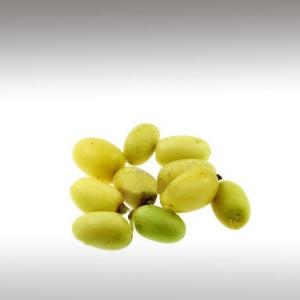

The Neem tree is part of the Mahogany family – Meliaceae and it is one of two species in the genus Azadirachta, native to India, Sri Lanka, Malaysia, Bangladesh and Pakistan. The Neem tree
is a fast growing, long-life tree popular in the tropics and is grown
for its ornamental value, as well as for its therapeutic value and is
used as fuel for its workable, but unpleasant smelling wood.
Almost all of the tree can be used. In herbal application the leaves, flowers, bark, seeds and oil is used. The seed yields Margosa oil (Neem oil) and is a non-drying oil with insecticidal and antiseptic properties.
Neem oil is a vegetable oil pressed from the fruits and seeds of the Neem (Azadirachta Indica), an evergreen tree which is endemic to the Indian subcontinent and has been introduced to many other areas in the tropics.
Neem oil varies in color: it can be golden yellow, yellowish brown, reddish brown, dark brown, greenish brown, or bright red. It has a rather strong odor that is said to combine the odours of Peanut and Garlic. It is composed mainly of triglycerides and contains many triterpenoid compounds, which are responsible for the bitter taste.
The oil normally contains the following: Oleic acid 52,8%,stearic acid 21,4%,palmitic acid 12,6%, linoleic acid2,1%, various lower fatty acids2,3%.
Almost all of the tree can be used. In herbal application the leaves, flowers, bark, seeds and oil is used. The seed yields Margosa oil (Neem oil) and is a non-drying oil with insecticidal and antiseptic properties.
Neem oil is a vegetable oil pressed from the fruits and seeds of the Neem (Azadirachta Indica), an evergreen tree which is endemic to the Indian subcontinent and has been introduced to many other areas in the tropics.
Neem oil varies in color: it can be golden yellow, yellowish brown, reddish brown, dark brown, greenish brown, or bright red. It has a rather strong odor that is said to combine the odours of Peanut and Garlic. It is composed mainly of triglycerides and contains many triterpenoid compounds, which are responsible for the bitter taste.
The oil normally contains the following: Oleic acid 52,8%,stearic acid 21,4%,palmitic acid 12,6%, linoleic acid2,1%, various lower fatty acids2,3%.
Submitted by OperaDreamhouse (September 26, 2014)
Castor Oil (Ricinus Communis) ☸ Base oils ☸ Base / General
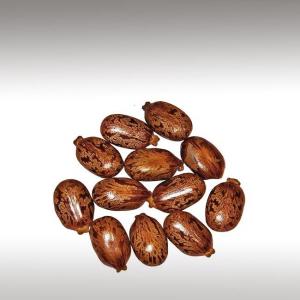

The Castor oil plant (Ricinus Communis) is a species of flowering plant in the spurge family, Euphorbiaceae. It belongs to amonotypic genus, Ricinus, and subtribe, Ricininae. Castor is indigenous to the southeastern Mediterranean Basin, Eastern Africa, and India. Castor is widespread throughout tropical regions.
The Castor oil plant can vary greatly in its growth habit and appearance. The variability has been increased by breeders who have selected a range of cultivars for leaf and flower colours, and for oil production.
Ricinus Communis has another common name, Palm of Christ, or Palma Christi, that derives from Castor oil's reputed ability to heal wounds and cure ailments.
Castor seed is the source of castor oil, which has a wide variety of uses. The seeds contain between 40% and 60% oil that is rich in triglycerides, mainly ricinolein. The seed contains ricin, a toxin, which is also present in lower concentrations throughout the plant.
It is a fast-growing, suckering perennial shrub that can reach the size of a small tree (around 12 metres). Plants with the dark leaves can be found growing next to those with green leaves, so there is most likely only a single gene controlling the production of the pigment in some varieties.
The fruit is a spiny, greenish (to reddish-purple) capsule containing large, oval, shiny, bean-like, highly poisonous seeds with variable brownish mottling. Castor seeds have a warty appendage called the caruncle, which is a type of elaiosome.
The toxicity of raw Castor beans is due to the presence of ricin. Although the lethal dose in adults is considered to be four to eight seeds, reports of actual poisoning are relatively rare. Despite this, suicides involving ingestion of Castor beans are unheard of in countries like India where Castor grows abundantly on the roadsides.
The attractive castor seeds are used in jewelry, mainly necklaces and bracelets. Castor seeds have been found in Egyptian tombs dating back to 4000 BC: the slow burning oil was used mostly to fuel lamps.
Submitted by OperaDreamhouse (September 26, 2014)
Pestle and Mortar ☸ Tools ☸ Base / General
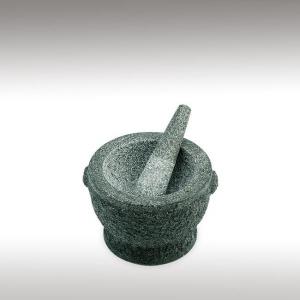

The Pestle is a heavy club-shaped object, the end of which is used for crushing and grinding. The Mortar is a bowl, typically made of hard wood, ceramic or stone.
Mortars and pestles have been used in cooking up to the present day: they are frequently also associated with the profession of pharmacy due to their historical use in preparing medicines.
Earliest found Mortars and pestles date back to around 35,000 years B.C. The antiquity of these tools is well documented in early writing, such as the Egyptian Ebers Papyrus of 1550 BCE (the oldest preserved piece of medical literature) and the Old Testament.
Mortars and pestles have been used in cooking up to the present day: they are frequently also associated with the profession of pharmacy due to their historical use in preparing medicines.
Earliest found Mortars and pestles date back to around 35,000 years B.C. The antiquity of these tools is well documented in early writing, such as the Egyptian Ebers Papyrus of 1550 BCE (the oldest preserved piece of medical literature) and the Old Testament.
The Japanese call it a Suribachi (also a volcanic bowl at Iwo Jima) and Suricogi (wood pestle). The Mexicans call it a Molcajete (seasoning bowl) and tejolote (from stone doll) for the pestle. It seems they originated the design, over 5,000 years ago, while the mortar and pestle appeared in Europe a mere 500 or so years ago.
Good Mortar and Pestle - making materials must be hard enough to crush the substance rather than be worn away by it. They cannot be too brittle either, or they will break during the pounding and grinding. The material should also be cohesive, so that small bits of the Mortar or Pestle do not get mixed in with the ingredients. Smooth and non-porous materials are chosen that will not absorb or trap the substances being ground.
Rough ceramic Mortar and Pestle sets can be used to reduce substances to very fine powders, but stain easily and are brittle.
Porcelain Mortars are sometimes conditioned for use by grinding some sand to give them a rougher surface which helps to reduce the particle size.
Other materials used include marble, stone, wood (highly absorbent), bamboo, iron, steel, brass and basalt.
Large Mortars and Pestles are commonly used in third-world countries to husk and dehull grain. These are usually made of wood, and operated by one or more people.
How to use a Mortar and Pestle:
- Place the food in the Mortar (bowl) in small quantities
- Use some downward pressure over the food with the pestle (pounder)
- With hard foodstuffs, like peppercorns and even pills, move the pestle back and forth over it with some pressure until it breaks up
- Turn the Pestle in a circular motion around the Mortar, maneuvering it back and forth with a bit of pressure over still unbroken pieces.
Submitted by OperaDreamhouse (September 26, 2014)
Madagascar Bourbon Vanilla Beans (Vanilla Planifolia) ☸ Ingredients ☸ Base / General
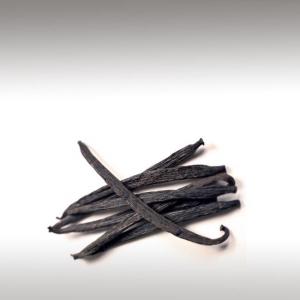

Vanilla is a flavor derived from orchids of the genus Vanilla, primarily from the Mexican species, flat-leaved Vanilla (Vanilla Planifolia). The word Vanilla, derived from the diminutive of the Spanish word Vaina (Vaina itself meaning Sheath or Pod), simply translates as little pod.
The majority of the world's Vanilla is the Vanilla Planifolia species, more commonly known as Bourbonvanilla (after the former name of Réunion, Île Bourbon) or Madagascar Vanilla, which is produced in Madagascar and neighboring islands in the southwestern Indian Ocean, and in Indonesia.
Vanilla grows as a vine, climbing up an existing tree (also called a tutor), pole, or other support. The distinctive flavour compounds are found in the fruit, which results from the pollination of the flower. One flower produces one fruit. Vanilla Planifolia flowers are hermaphroditic: They carry both male (anther) and female (stigma) organs.
Stages of production :
The Vanilla fruit grows quickly on the vine, but is not ready for harvest until maturity - approximately six months. Harvesting Vanilla fruits is as labor-intensive as pollinating the blossoms. Immature dark green pods are not harvested. Pale yellow discoloration that commences at the distal end of the fruits is an indication of the maturity of pods. Each fruit ripens at its own time, requiring a daily harvest. To ensure the finest flavor from every fruit, each individual pod must be picked by hand just as it begins to split on the end.
Sweating is a hydrolytic and oxidative process. Traditionally, it consists of keeping fruits, for seven to 10 days, densely stacked and insulated in wool or other cloth. This retains a temperature of 45 - 65 °C and high humidity. Daily exposure to the sun may also be used, or dipping the fruits in hot water. The fruits are brown and have attained much of the characteristic Vanilla flavor.
Reduction of the beans to 25 - 30% moisture by weight, to prevent rotting and to lock the aroma in the pods, is always achieved by some exposure of the beans to air, and usually (and traditionally) intermittent shade and sunlight.
Conditioning is performed by storing the pods for five to six months in closed boxes, where the fragrance develops. The processed fruits are sorted, graded, bundled, and wrapped in paraffin paper and preserved for the development of desired bean qualities, especially flavor and aroma. The cured Vanilla fruits contain an average of 2.5% Vanillin.
If the fruit is more than 15 cm in length, it belongs to first-quality product. The largest fruits greater than 16 cm and up to as much as 21 cm are usually reserved for the gourmet Vanilla market, for sale to top chefs and restaurants. If the fruits are between 10 and 15 cm long, pods are under the second-quality category, and fruits less than 10 cm in length are under the third-quality category. Vanilla is the second most expensive spice after Saffron, because growing the Vanilla seed pods is labor-intensive.
There are many compounds present in the extracts of Vanilla. The chemical compound Vanillin is primarily responsible for the characteristic flavor and smell of Vanilla. Another minor component of Vanilla essential oil is piperonal (heliotropin). Piperonal and other substances affect the odor of natural Vanilla.
Submitted by OperaDreamhouse (September 25, 2014)
Omani Frankincense Resin (Boswellia Sacra) ☸ Ingredients ☸ Base / General
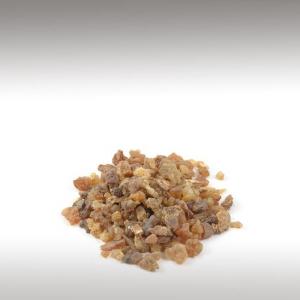

Boswellia Sacra (Frankincense) is a tree in the Burseraceae family. It is the primary tree in the genus Boswellia from which Frankincense, a resinous dried sap, is harvested. It is native to the Arabian Peninsula (Oman, Yemen), and northeastern Africa (Somalia).
Individual trees growing on steep slopes tend to develop some buttressing that extends from the roots up into the base of the stem. This forms a sort of cushion that adheres to the rock and ensures a certain stability. The trees start producing resin when they are about 8 to 10 years old.
The resin is extracted by making a small, shallow incision on the trunk or branches of the tree or by removing a portion of the crust of it. The resin is drained as a milky substance that coagulates in contact with air and is collected by hand.
Trees in the narrow fog-laden zone where the desert meets Dhofar mountain range, a region known as the Nejd, grow extremely slowly and produce very high quality resin in large, white clumps. Not surprisingly, Omanis and other Gulf State Arabs consider this to be superior to all other resins produced in North and Northeast Africa, India, and Asia, and it is priced accordingly.
Standard Frankincense resins produce beautiful bright citrus aroma with slight underlying woody and balsamic tones. Of the Frankincense resins from Oman, Hojary is the most sought after of all.
Frankincense is mentioned in the Bible as one of the three types of gifts the wise men gave to the young child Jesus. Historical and archaeological evidence strongly suggest that the Frankincense given to the Christ child was either the prized Boswellia carteri species, of African origin, or the more highly prized Boswellia Sacra, of Arabian origin.
The lost city of Ubar, sometimes identified with Irem in what is now the town of Shisr in Oman, is believed to have been a center of the Frankincense trade along the recently rediscovered "Incense Road". Ubar was rediscovered in the early 1990s and is now under archaeological excavation.
For nearly 5,000 years, the resin from the Boswellia tree was considered Arabia’s most precious commodity. The allure of Frankincense enticed adventurers from afar who sought the irresistible resin, and the FrankincenseTrail in Oman’s Dhofar region was purportedly visited by the notable explorers Marco Polo and Lawrence of Arabia.
Individual trees growing on steep slopes tend to develop some buttressing that extends from the roots up into the base of the stem. This forms a sort of cushion that adheres to the rock and ensures a certain stability. The trees start producing resin when they are about 8 to 10 years old.
The resin is extracted by making a small, shallow incision on the trunk or branches of the tree or by removing a portion of the crust of it. The resin is drained as a milky substance that coagulates in contact with air and is collected by hand.
Trees in the narrow fog-laden zone where the desert meets Dhofar mountain range, a region known as the Nejd, grow extremely slowly and produce very high quality resin in large, white clumps. Not surprisingly, Omanis and other Gulf State Arabs consider this to be superior to all other resins produced in North and Northeast Africa, India, and Asia, and it is priced accordingly.
Standard Frankincense resins produce beautiful bright citrus aroma with slight underlying woody and balsamic tones. Of the Frankincense resins from Oman, Hojary is the most sought after of all.
Frankincense is mentioned in the Bible as one of the three types of gifts the wise men gave to the young child Jesus. Historical and archaeological evidence strongly suggest that the Frankincense given to the Christ child was either the prized Boswellia carteri species, of African origin, or the more highly prized Boswellia Sacra, of Arabian origin.
The lost city of Ubar, sometimes identified with Irem in what is now the town of Shisr in Oman, is believed to have been a center of the Frankincense trade along the recently rediscovered "Incense Road". Ubar was rediscovered in the early 1990s and is now under archaeological excavation.
For nearly 5,000 years, the resin from the Boswellia tree was considered Arabia’s most precious commodity. The allure of Frankincense enticed adventurers from afar who sought the irresistible resin, and the FrankincenseTrail in Oman’s Dhofar region was purportedly visited by the notable explorers Marco Polo and Lawrence of Arabia.
The higher the purity of the Frankincense Resin, the higher the quality. Higher grades of resin are brighter in colour, more bitter in taste, more fragrant in smell and burn with greater ease. When soaking resin in water a slightly whitish colour is released. When burned or diffused as an incense, Frankincense Resin has a pleasant fresh, resinous, dry odour, with a fruity scent as its high note.
In the Middle East resin used as incense is known as “Al Luban”. In Europe it became know under the English translation of “Oliban”, derived from the Old English of “Frank” and “Incense”, meaning “real incense”.
Submitted by OperaDreamhouse (September 17, 2014)
Myrrh Gum (Commiphora Myrrha) ☸ Ingredients ☸ Base / General
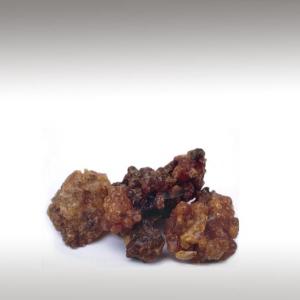

Myrrh is the aromatic resin of a number of small, thorny tree species of the genus Commiphora. Myrrh resin is a natural Gum.
When a tree wound penetrates through the bark and into the sapwood, the tree bleeds a resin. Myrrh Gum, like Frankincense, is such a resin. When people harvest Myrrh, they wound the trees repeatedly to bleed them of the Gum.
Myrrh Gum is waxy, and coagulates quickly. After the harvest, the Gum becomes hard and glossy. The Gum is yellowish, and may be either clear or opaque. It darkens deeply as it ages, and white streaks emerge.
Myrrh Gum is commonly harvested from the species Commiphora Myrrha, which is native to Yemen, Somalia, Eritrea and eastern Ethiopia. Another commonly used name, Commiphora Molmol, is now considered a synonym of Commiphora Myrrha. The related Commiphora Gileadensis, native to Eastern Mediterranean and particularly the Arabian Peninsula, is the biblically referenced Balm of Gilead, also known as Balsam of Mecca. The word “Myrrh” derives from the the Aramaic (Murr), meaning “Was Bitter”.
Myrrh is the aromatic oleoresin of a number of small, thorny tree species of the genus Commiphora, which grow in dry, stony soil. An oleoresin is a natural blend of an essential oil and a resin.
So valuable has it been at times in ancient history that it has been equal in weight value to gold. During times of scarcity, its value rose even higher than that. It has been used throughout history as a perfume, incense, medicine and spiritual practice.
Little appears to be definitely known about the collection of Myrrh. It seems probable that the best drug comes from Somaliland, is bought at the fairs of Berbera by the Banians of India, shipped to Bombay, and there sorted, the best coming to Europe and the worst being sent to China.
When a tree wound penetrates through the bark and into the sapwood, the tree bleeds a resin. Myrrh Gum, like Frankincense, is such a resin. When people harvest Myrrh, they wound the trees repeatedly to bleed them of the Gum.
Myrrh Gum is waxy, and coagulates quickly. After the harvest, the Gum becomes hard and glossy. The Gum is yellowish, and may be either clear or opaque. It darkens deeply as it ages, and white streaks emerge.
Myrrh Gum is commonly harvested from the species Commiphora Myrrha, which is native to Yemen, Somalia, Eritrea and eastern Ethiopia. Another commonly used name, Commiphora Molmol, is now considered a synonym of Commiphora Myrrha. The related Commiphora Gileadensis, native to Eastern Mediterranean and particularly the Arabian Peninsula, is the biblically referenced Balm of Gilead, also known as Balsam of Mecca. The word “Myrrh” derives from the the Aramaic (Murr), meaning “Was Bitter”.
Myrrh is the aromatic oleoresin of a number of small, thorny tree species of the genus Commiphora, which grow in dry, stony soil. An oleoresin is a natural blend of an essential oil and a resin.
So valuable has it been at times in ancient history that it has been equal in weight value to gold. During times of scarcity, its value rose even higher than that. It has been used throughout history as a perfume, incense, medicine and spiritual practice.
Little appears to be definitely known about the collection of Myrrh. It seems probable that the best drug comes from Somaliland, is bought at the fairs of Berbera by the Banians of India, shipped to Bombay, and there sorted, the best coming to Europe and the worst being sent to China.
The true Myrrh is known in the markets as Karam, formerly called Turkey Myrrh, and the opaque bdellium as Meena Harma.
Submitted by OperaDreamhouse (September 17, 2014)
Benzoin Resin (Styrax Tonkinensis) ☸ Ingredients ☸ Base / General
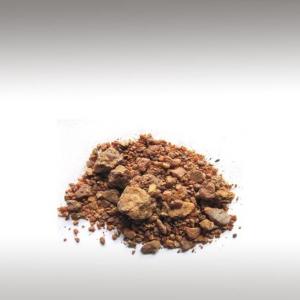

Styrax Benzoin is a species of tree native to Indonesia which is a main source of Benzoin resin. It is a common member of the forests of Sumatra, where it grows to about 12 meters in Maximum height. It is also cultivated in West Africa as a shade tree. Common names for the tree include gum Benjamin tree, loban(in Arabic), kemenyan (in Indonesia and Malaysia), onycha, and Sumatra Benzoin tree.
Benzoin resin or Styrax resin is a balsamic resin obtained from the bark of several species of trees in the genus Styrax.
Benzoin resin is a balsamic resin obtained from the bark of several species of trees in the genus Styrax. Commonly called "Benzoin", it is called "Benzoin Resin" here to distinguish it from the chemical compound Benzoin.
Benzoin resin or Styrax resin is a balsamic resin obtained from the bark of several species of trees in the genus Styrax.
Benzoin resin is a balsamic resin obtained from the bark of several species of trees in the genus Styrax. Commonly called "Benzoin", it is called "Benzoin Resin" here to distinguish it from the chemical compound Benzoin.
Benzoin resin does not contain this crystalline compound. Benzoin is also called gum Benzoin or gum Benjamin, but "gum" is incorrect as Benzoin is not a polysaccharide. Its name came via the Italian from the Arabic "Lubān Jāwī"("Frankincense from Java").
Benzoin resin is a common ingredient in incense-making and perfumery because of its sweet vanilla-like aroma and fixative properties.
There are two common kinds of Benzoin resin, Benzoin Siam and Benzoin Sumatra. Benzoin Siam is obtained from Styrax tonkinensis, found across Thailand, Laos, Cambodia, and Vietnam. Benzoin Sumatra is obtained from Styrax Benzoin, which grows predominantly on the island of Sumatra.
Gum Benzoin is a major component of the type of church incense used in Russia and some other Orthodox Christian societies. Most Benzoin is used in Arab Gulf countries and India, where it is burned on charcoal as an incense.
Benzoin resin is a common ingredient in incense-making and perfumery because of its sweet vanilla-like aroma and fixative properties.
There are two common kinds of Benzoin resin, Benzoin Siam and Benzoin Sumatra. Benzoin Siam is obtained from Styrax tonkinensis, found across Thailand, Laos, Cambodia, and Vietnam. Benzoin Sumatra is obtained from Styrax Benzoin, which grows predominantly on the island of Sumatra.
Gum Benzoin is a major component of the type of church incense used in Russia and some other Orthodox Christian societies. Most Benzoin is used in Arab Gulf countries and India, where it is burned on charcoal as an incense.
It is also used in the production of Bakhoor (scented wood chips) as well as various mixed resin incense in the Arab countries and the Horn of Africa.
Benzoin resin is also used in blended types of Japanese incense, Indian incense, Chinese incense, and Papier d'Arménie as well as incense sticks.
Submitted by OperaDreamhouse (September 17, 2014)
Benzoin Resin (Styrax Tonkinensis) ☸ Ingredients ☸ Spiritual Practises


Emotionally, Styrax Benzoin Absolute is calming and grounding. In Chakra work, it is a recommended oil for use with the Root Chaka.
Submitted by OperaDreamhouse (September 17, 2014)
Shea Butter (Butyrospermum Parkii) ☸ Base oils ☸ Base / General
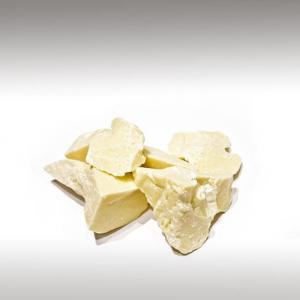

Vitellaria Paradoxa (formerly Butyrospermum Parkii), commonly known as Shea tree, Shi tree or Vitellaria, is a tree of the Sapotaceae family. It is the only species in genus Vitellaria, and is indigenous to Africa.
The Shea fruit consists of a thin, tart, nutritious pulp that surrounds
a relatively large, oil-rich seed from which Shea Butter is extracted.
The common name is Shíyiri or Shísu in the Bambara language of Mali. This is the origin of the English word, and is pronounced "Shee" to rhyme with "Tea". The tree is called Ghariti in the Wolof language of Senegal, which is the origin of the French name of the tree and the butter, Karité. In Hausa language the tree is called Kade or Kadanya.
The Shea tree is a traditional African food plant. The tree starts bearing its first fruit when it is 10 to 15 years old, full production is attained when the tree is about 20 to 30 years old. It then produces nuts for up to 200 years.
The Shea tree grows naturally in the wild in the dry savannah belt of West Africa from Senegal in the west to Sudan in the east, and onto the foothills of the Ethiopian highlands. It occurs in 19 countries across the African continent, namely Benin, Burkina Faso, Cameroon, Central African Republic, Chad, Ethiopia, Ghana, Guinea Bissau, Côte d'Ivoire, Mali, Niger, Nigeria, Senegal, Sierra Leone, Sudan, Togo,Uganda, Democratic Republicof the Congo, and Guinea.
A testa found at the site of the medieval village of Saouga is evidence of Shea Butter production by the 14th century.
The United States Agency for International Development, Gassel Consulting, and many other companies have suggested a classification system for Shea Butter separating it into five grades: A (raw or unrefined, extracted using water), B (refined), C (highly refined and extracted with solvents such as hexane), D (lowest uncontaminated grade), E (with contaminants).
The color of raw (grade A) butter ranges from cream (like whipped butter) to grayish yellow, and it has a nutty aroma which is removed in the other grades.
Grade C is pure white. While the level of vitamin content can be affected by refining, up to 95% of vitamin content can be removed from refined grades of Shea Butter while reducing contamination levels to non-detectable levels.
Chemical structure:
Shea Butter is composed of five principal fatty acids: palmitic, stearic, oleic, linoleic, and arachidic. About 85 to 90% of the fatty acid composition is stearic and oleic acids. The relative proportion of these two fatty acids affects Shea Butter consistency. The stearic acid gives it a solid consistency, while the oleic acid influences how soft or hard the Shea Butter is, depending on ambient temperature.
The proportions of stearic and oleic acids in the Shea kernels and Butter differ across the distribution range of the species. Ugandan Shea Butter has consistently high oleic acid content, and is liquid at warm ambient temperatures. It fractionizes into liquid and solid phases, and is the source of liquid Shea oil.
Thefatty acidproportion of West African Shea Butter is much more variable than Ugandan Shea Butter, with an oleic content of 37 to 55%. Variability can be high even locally, and a tree that produces hard butter can grow with one that produces soft butter. Nuts are gathered from a wide area for local production, so Shea Butter consistency is determined by the average fatty acid profile of the population. Within West Africa, Shea Butter from the Mossi Plateau region of Burkina Faso has a higher average stearic acid content, and so is usually harder than Shea Butter from other West African regions.
It has a high lipid profile, also containing beneficial phytochemicals (Vitamin A). It also contains oleic acid (omega - 9 monounsaturated fatty acid).
The common name is Shíyiri or Shísu in the Bambara language of Mali. This is the origin of the English word, and is pronounced "Shee" to rhyme with "Tea". The tree is called Ghariti in the Wolof language of Senegal, which is the origin of the French name of the tree and the butter, Karité. In Hausa language the tree is called Kade or Kadanya.
The Shea tree is a traditional African food plant. The tree starts bearing its first fruit when it is 10 to 15 years old, full production is attained when the tree is about 20 to 30 years old. It then produces nuts for up to 200 years.
The Shea tree grows naturally in the wild in the dry savannah belt of West Africa from Senegal in the west to Sudan in the east, and onto the foothills of the Ethiopian highlands. It occurs in 19 countries across the African continent, namely Benin, Burkina Faso, Cameroon, Central African Republic, Chad, Ethiopia, Ghana, Guinea Bissau, Côte d'Ivoire, Mali, Niger, Nigeria, Senegal, Sierra Leone, Sudan, Togo,Uganda, Democratic Republicof the Congo, and Guinea.
A testa found at the site of the medieval village of Saouga is evidence of Shea Butter production by the 14th century.
The United States Agency for International Development, Gassel Consulting, and many other companies have suggested a classification system for Shea Butter separating it into five grades: A (raw or unrefined, extracted using water), B (refined), C (highly refined and extracted with solvents such as hexane), D (lowest uncontaminated grade), E (with contaminants).
The color of raw (grade A) butter ranges from cream (like whipped butter) to grayish yellow, and it has a nutty aroma which is removed in the other grades.
Grade C is pure white. While the level of vitamin content can be affected by refining, up to 95% of vitamin content can be removed from refined grades of Shea Butter while reducing contamination levels to non-detectable levels.
Chemical structure:
Shea Butter is composed of five principal fatty acids: palmitic, stearic, oleic, linoleic, and arachidic. About 85 to 90% of the fatty acid composition is stearic and oleic acids. The relative proportion of these two fatty acids affects Shea Butter consistency. The stearic acid gives it a solid consistency, while the oleic acid influences how soft or hard the Shea Butter is, depending on ambient temperature.
The proportions of stearic and oleic acids in the Shea kernels and Butter differ across the distribution range of the species. Ugandan Shea Butter has consistently high oleic acid content, and is liquid at warm ambient temperatures. It fractionizes into liquid and solid phases, and is the source of liquid Shea oil.
Thefatty acidproportion of West African Shea Butter is much more variable than Ugandan Shea Butter, with an oleic content of 37 to 55%. Variability can be high even locally, and a tree that produces hard butter can grow with one that produces soft butter. Nuts are gathered from a wide area for local production, so Shea Butter consistency is determined by the average fatty acid profile of the population. Within West Africa, Shea Butter from the Mossi Plateau region of Burkina Faso has a higher average stearic acid content, and so is usually harder than Shea Butter from other West African regions.
It has a high lipid profile, also containing beneficial phytochemicals (Vitamin A). It also contains oleic acid (omega - 9 monounsaturated fatty acid).
Submitted by OperaDreamhouse (September 16, 2014)
Cocoa Butter (Theobroma Cacao) ☸ Base oils ☸ Base / General
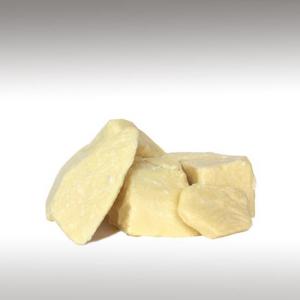

Theobroma Cacao also Cacao tree and Cocoa tree, is a small 4 - 8 m evergreen tree in the family Malvaceae native to the deep tropical regions of Central and South America. Its seeds, cocoa beans, are used to make Cocoa mass, Cocoa powder, and chocolate.
The flowers are produced in clusters directly on the trunk and older branches. The fruit, called a Cacao pod, is ovoid, 15 - 30 cm long and 8 - 10 cm wide, ripening yellow to orange, and weighs about 500 g when ripe. The pod contains 20 to 60 seeds, usually called "Beans", embedded in a white pulp. Each seed contains a significant amount of fat (40 - 50%) as Cocoa Butter. Their most noted active constituent is Theobromine, a compound similar to Caffeine.
The flowers are produced in clusters directly on the trunk and older branches. The fruit, called a Cacao pod, is ovoid, 15 - 30 cm long and 8 - 10 cm wide, ripening yellow to orange, and weighs about 500 g when ripe. The pod contains 20 to 60 seeds, usually called "Beans", embedded in a white pulp. Each seed contains a significant amount of fat (40 - 50%) as Cocoa Butter. Their most noted active constituent is Theobromine, a compound similar to Caffeine.
The generic name is derived from the Greek for "Food of the Gods". Theobromagrandiflorum, is a closely related species found in Colombia, Peru, Bolivia, Africa and Brazil. Cacao Butter is widely distributed from southeastern Mexico to the Amazon basin. greatest Cacao genetic diversity to a bean-shaped area that encompasses the border between Brazil and Peru and the southern part of the Colombian-Brazilian border. Climate models indicate that at the peak of the last ice age 21,000 years ago, when habitat suitable for Cacao was at its most reduced, this area was still suitable, and so provided a refugium for the species.
The first Europeans to encounter Cacao were Christopher Columbus and his crew in 1502, when they captured a canoe at Guanaja that contained a quantity of mysterious-looking "Almonds". The first real European knowledge about chocolate came in the form of a beverage which was first introduced to the Spanish at their meeting with Moctezuma in the Aztec capital of Tenochtitlan in 1519.
Cocoa Butter, also called Theobroma oil, is a pale-yellow, edible vegetable fat extracted from the Cocoa bean. Cocoa Butter has a cocoa flavor and aroma.
Cocoa Butter is obtained from whole Cocoa beans, which are fermented, roasted, and then separated from their hulls. The most common form of Cocoa Butter has a melting point of around 34 - 38 °C.
Submitted by OperaDreamhouse (September 16, 2014)
Page 32 of 48

